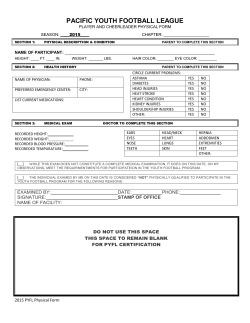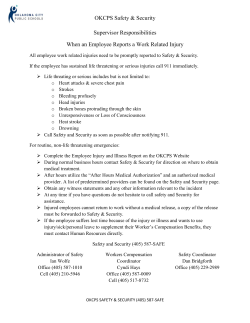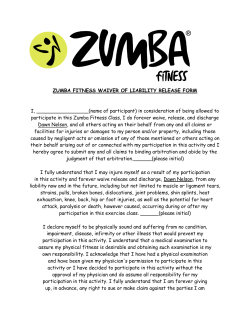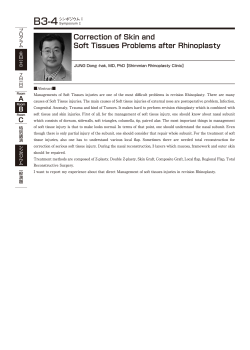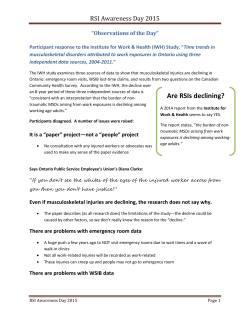
first aid level 1 - Hazcom-DGR
HAZCOM-DGR (Pty) Ltd Lothlorien Industrial Park 490 Tedstone Road Wadeville, 1422 082 312 5525 Sharon - Fax: 0865 951 247 Postnet Suite 1550 Private Bag X1007 Lyttelton, 0140 Telephone: 084 320 4555 Johan - 084 810 6984 Brendan Email: info@hazcomdgr.co.za FIRST AID FOR THE WORKPLACE (Level – I) “Perform basic life support and first aid procedures” WHAT ARE DANGEROUS GOODS? First Aid is one of the most important Health and Safety Appointments under the General Safety Regulations of the Occupational Health and Safety Act. Employers are compelled to train and appoint First Aiders with the cost thereof carried by the company concerned. First Aid training is only valid for three (3) years and must be renewed. . Injuries and medical emergencies encountered in workplaces are wide ranging and usually take everyone by surprise. It is therefore imperative that key personnel are properly trained to deal with any life-threatening emergency efficiently and speedily to give the patient the maximum chance of recovery or survival. The first few minutes of a serious medical emergency can decide the outcome of an incident. The failure or inability to treat life-threatening situations can result in the death of a patient. SOME LIFE THREATENING EMERGENCIES Unconsciousness (Priority 1) Cessation of Breathing (Choking, asphyxiation, lung damage, asthma) Cardiac Arrest / Failure (Heart Attacks) or lack of circulation (No Pulse) Severe Bleeding (Internal or external) Medical Shock (Due to severe injury or lack of oxygen to the brain) Allergic Reactions (Asthma, chemicals, insect stings, food) Poisoning (Chemicals, snakes, spiders) Burns (Heat or Chemical) Bone Fractures (Open or Complicated Fractures) Electrocution (High-Tension Electricity) Hypothermia and Hyperthermia (Cold or Heat in excess) Falling from Heights (Failing to use Fall Protection) Vehicle Accidents (Collisions, vehicles or forklifts) Head and Spine Injuries (Falls, impact or assault) Gunshot or Stab Wounds (Criminal Acts or Accidental) WHAT ARE THE LEGAL REQUIREMENTS FOR TRAINING OF EMPLOYEES IN FIRST AID? In order to answer this question properly, one must refer to the Occupational Health and Safety Act and General Safety Regulations. Reg 3 of the General Safety Regulations. GNR. 1031 of 30 May 1986 (as amended) states the following: (1) An employer shall take all reasonable steps that are necessary under the circumstances, to ensure that persons at work receive prompt first aid treatment in case of injury or emergency. (4) Where more than 10 employees are employed at a workplace, the employer of such employees shall take steps to ensure that for every group of up to 50 employees at that workplace, or in the case of a shop or an office as contemplated in the Basic Conditions of employment Act, 1983 (Act No. 3 of 1983), for every group of up to 100 employees, at least one person is readily available during normal working hours, who is in possession of a valid certificate of competency in first aid… (6) An employer shall affix a prominent notice or sign in a conspicuous place at a workplace, indicating where the first aid box or boxes are kept as well as the name of the person in charge of such first aid box or boxes. ©Reserved to Hazcom-DGR® (Pty) Ltd - 2015 Page 1 UNIT STANDARD ID: 119567 NQF Level: 1 Credits: 5 TRAINING OF FIRST AIDERS in the workplace is conducted over two days on-site (minimum 6 persons) at clients, if a suitable training venue can be provided on the premises. Training is also provided at our training facility in Croydon (subject to course availability and prior booking is essential). PURPOSE OF FIRST AID TRAINING: This unit standard is for persons required to assess the emergency situation and providing basic Life Support and basic First Aid in order to stabilise patients prior to transfer to the emergency services. The qualifying learner will be capable of: • Demonstrate an understanding of emergency scene management • Demonstrate an understanding of elementary anatomy and physiology • Assess an emergency situation • Apply First Aid procedures to the life-threatening situation • Treat common injuries MINIMUM CRITERIA (RECOGNITION OF PRIOR LEARNING): • Communication at NQF Level 3 or equivalent AND Mathematical Literacy at NQF Level 3 or equivalent. FIRST AID TRAINING PROGRAMME – COURSE CONTENT: UNIT STANDARD RANGE • The recognition and management of a range of emergencies according to the prescribed protocols. • Rendering basic First Aid to the community even if the required resources have to be improvised. SPECIFIC OUTCOMES: 1. Understanding of emergency scene management. - Maintenance of personal safety is explained in terms of preventing injuries to self and infectious diseases. - Methods of safeguarding the emergency scene are explained in accordance with relevant practices and legislation. - Methods of safeguarding the injured person are explained in accordance with relevant practices and legislation. - The medico-legal implications of rendering First Aid are explained in terms of relevant legislation. 2. Understanding of elementary anatomy and physiology. - The different systems of the human body are described in terms of their structure and function. - The manner in which the systems relate to each other is explained in accordance with basic medical science. - The way in which each system operates is explained in accordance with basic medical science. 3. Assess an emergency situation. - The emergency situation is assessed in terms of priority treatments. - The cause of the emergency is identified in terms of main contributing factors. - Fractures, burns, lacerations, difficulty breathing, severe haemorrhage, head injuries, spinal injuries, consciousness, strains & sprains. - The situation is assessed in terms of the type of assistance required. 4. Apply First Aid procedures to the life-threatening situation. - Cardio-Pulmonary (CP) arrest; cessation of breathing; severe haemorrhage. 5. Treat common injuries - Different types of injuries and conditions are identified and described in terms of their severity, cause and possible treatment. GENERAL Experienced and registered Assessors (Transport Education Training Authority "TETA" Registered) conduct training over two full days. Learners are then expected to complete a Summative Theory and Practical Assessment and must achieve a minimum result of 75% in order to be deemed Competent and receive their 36-month certificate. Learners receive a pen and learner guide which they retain once training is completed. Only fully-comprehensive training is offered, since the relevant legislation does not provide for "refresher courses". For quotations, price estimates and assistance on any related Training for Dangerous Goods Transport, Storage or Handling please contact our friendly consultants below: SALES & MARKETING MANAGING DIRECTOR TRAINING AND COMPLIANCE SALES EXECUTIVE ©Reserved to Hazcom-DGR® (Pty) Ltd - 2015 Sharon Long Johan Muller Brendan Adams Sheri De Abreu 082 312 5525 084 320 4555 084 810 6984 082 857 6079 sharon@hazcomdgr.co.za johan@hazcomdgr.co.za brendan@hazcomdgr.co.za sales1@hazcomdgr.co.za Page 2
© Copyright 2025
